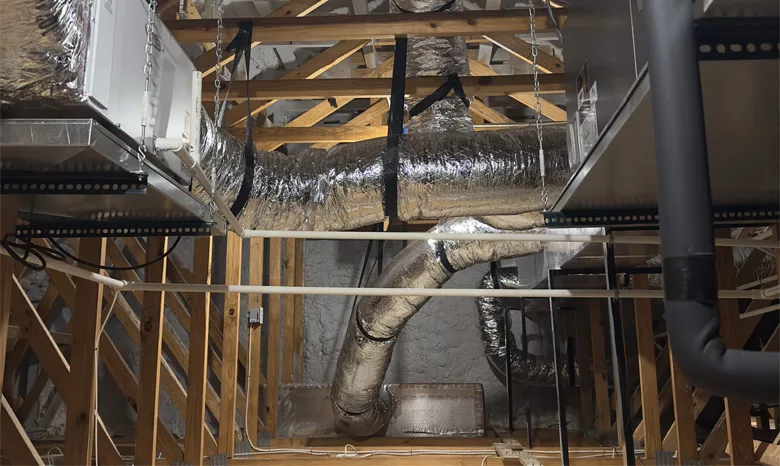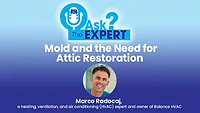News Headlines
Mold and the Need for Attic Restoration
HVAC Expert Marco Radocaj Specializes in Resolving Attic Issues

Restoration & Remediation recently spoke with Marco Radocaj, a heating, ventilation, and air conditioning (HVAC) expert and owner of Balance HVAC. Marco addressed some concerns about hidden problems with mold related to air quality, with a particular focus on attics.
In his business, Marco performs attic restorations and collaborates closely with contractors and homeowners in identifying and resolving these hidden problems.
Q: How do the design of a home and efforts to improve energy efficiency provide greater potential for the growth of mold?
Radocaj:. Features like energy-efficient windows, cooler attic environments due to improved roofing materials, and encapsulated attics can inadvertently lead to increased moisture, humidity, and environments conducive to mold growth. These issues can arise when homes are not properly aligned with modern building practices, potentially resulting in discomfort, poor indoor air quality, and health hazards.
Q: How do you identify and address these issues?
Radocaj: We start by identifying homes that are underperforming or straddling building codes.
This includes any house that has had an upgrade to the enclosure (insulation, roof, windows etc. that has not been accounted for with the mechanical system. Without consideration for both elements, any significant change to either the enclosure or the mechanical system can lead to elevated humidity levels or water condensation.
As an HVAC company, we generally find mold growth either inside the duct work, on the duct work, or inside the unconditioned attic space. Through a combination of optimal insulation techniques, strategic ventilation solutions, and moisture management strategies, we help homeowners achieve the perfect balance between energy efficiency and indoor environmental quality. Our approach is tailored to each home's unique needs.
Q: How do the HVAC systems come into play with all of this?
Radocaj: We recognize that homes built two decades ago were designed to "breathe," allowing for natural airflow to regulate temperature and moisture levels. However, modern construction methods and materials have shifted towards creating tighter homes that are not meant to breathe in the same way.
Our concept of attic restorations goes beyond simply renovating attic spaces—it's about harmonizing the home's enclosure and mechanical systems to create environments that are truly conducive to healthy, happy living.
Q: What if the mold problem that has been remediated didn’t involve the attic?
Radocaj: If the mold problem was not in the attic, the attic should still be inspected and possibly updated to address these problems and reduce the risk of reoccurrence. This is especially true in the instance of a home having an encapsulated attic space. Before the encapsulation, the attic is considered an outside space. It is not uncommon for duct work inside vented attics to have surface mold, as mold growth outside is generally a moot point. However, once those same ducts become encapsulated, the mold growth that was harmless inside the vented attic is now inside the home and can lead to additional issues.
There are also several instances where mechanical systems with deficiencies can accelerate the infiltration of outside air into the home. This only compounds the problem. The attic restoration process provides homeowners with complete control of the inside space; meaning that all spaces that would have potential for mold damage are conditioned leaving these spaces not conducive for mold growth.
Looking for a reprint of this article?
From high-res PDFs to custom plaques, order your copy today!





